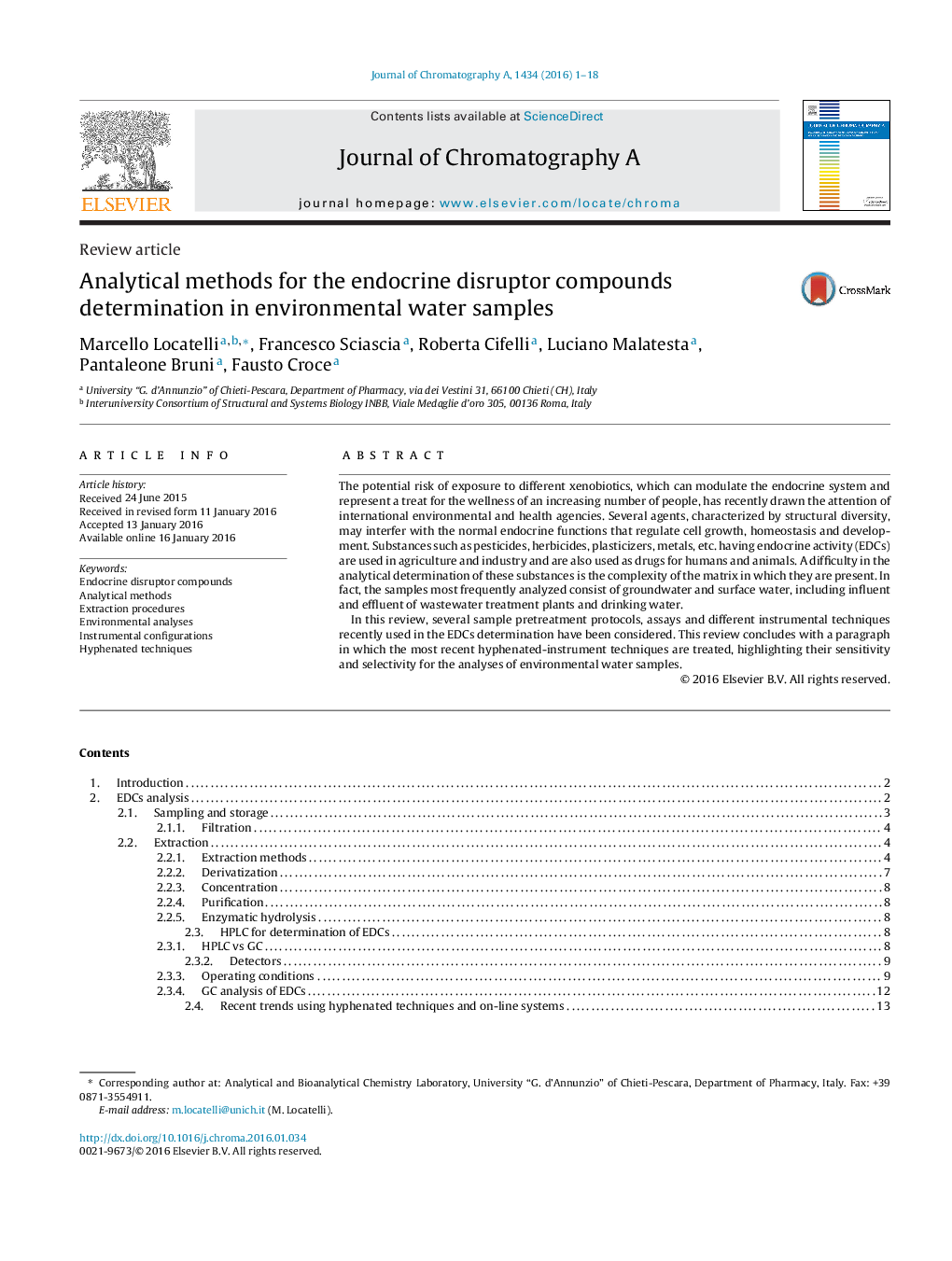| Article ID | Journal | Published Year | Pages | File Type |
|---|---|---|---|---|
| 1198965 | Journal of Chromatography A | 2016 | 18 Pages |
•Recent advantages in EDCs compounds analysis in environmental water samples.•Extraction procedures and instrument configurations adopted.•Review of main problems related to water-based matrices analyses.•Water interferences removal and instrumental analysis choices.
The potential risk of exposure to different xenobiotics, which can modulate the endocrine system and represent a treat for the wellness of an increasing number of people, has recently drawn the attention of international environmental and health agencies. Several agents, characterized by structural diversity, may interfer with the normal endocrine functions that regulate cell growth, homeostasis and development. Substances such as pesticides, herbicides, plasticizers, metals, etc. having endocrine activity (EDCs) are used in agriculture and industry and are also used as drugs for humans and animals. A difficulty in the analytical determination of these substances is the complexity of the matrix in which they are present. In fact, the samples most frequently analyzed consist of groundwater and surface water, including influent and effluent of wastewater treatment plants and drinking water.In this review, several sample pretreatment protocols, assays and different instrumental techniques recently used in the EDCs determination have been considered. This review concludes with a paragraph in which the most recent hyphenated-instrument techniques are treated, highlighting their sensitivity and selectivity for the analyses of environmental water samples.
